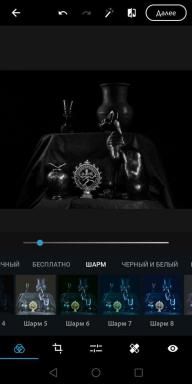How the Beauty and the Dragon anime mixes a classic fairy tale with current themes
Miscellaneous / / April 22, 2022
The work of the famous author unusually tells about immersion in the Internet and pleases with musical numbers.
On April 14, the full-length anime "Beauty and the Dragon" from the famous director Mamoru Hosoda will be released on Russian screens. In the summer of 2021, the film was shown at the Cannes Film Festival, where it was highly appreciated by critics. Moreover, this is not the first time the director enters the competition: in 2018, one of his most famous works, Mirai from the Future, was shown in the same Cannes.
Hosoda anime are good because they are understandable to any viewer. Both fans of Japanese cartoons and those who are completely unfamiliar with this art form can watch them. "Beauty and the Dragon" is no exception: the picture raises serious questions, but at the same time remains light and fabulous, so both adults and children will like it.
A combination of several interesting themes
Shy schoolgirl Suzu loved music since childhood. But after the death of her mother, who bravely rushed to save an unfamiliar child, the girl stopped singing.
Unexpectedly, Suzu is helped by the new U Network, offering people to immerse themselves in anonymous virtual reality. There, the girl takes the name Belle and becomes a popular singer.
But one day she comes across dragon - an aggressive user who fights in the ring. Suzu realizes that this man needs help, but can't figure out his true identity.
Mamoru Hosoda has been creating anime around the same topics for many years. He often talks about the importance of the family (as in "The Beast's Apprentice" or "Mirai from the Future"), searching for oneself and reflecting on the past ("The Girl Who Leapt Through Time"). Even the virtual world has already appeared in his "Summer Wars".
Therefore, "Beauty and the Dragon" can be called a compilation of all the author's work. He tries to cover several important topics at once. On the one hand, Hosoda talks about shy and traumatized people who are afraid to reveal themselves to others. And in this regard, he uses the virtual world in a very interesting way.
Too often, the older generation (and Hosoda is still over 50) love to criticize social networks and the escape from reality to the Internet. Beauty and the Dragon, on the other hand, shows that anonymity and fantastic avatars can be a kind of therapy and help to cope with the traumas of real life.
But the story doesn't stop there. Mamoru Hosoda also talks about a familiar topic at the same time families and searching for loved ones. Suffering from the loss of his mother, Suzu does not notice his understanding father. Moreover, she does not even see that there is another caring person next to her.
At the same time, they will also capture another interesting topic: even the most popular people, whom everyone around them considers beautiful and self-confident, can be just as timid and notorious inside.
And by the end of "Beauty and the Dragon" will suddenly enter the toughest and darkest part: the story of domestic violence. This problem is relevant in patriarchal Japan. And, alas, in many other countries.
Unfortunately, we have to admit that the author did not manage to fully fit all of the above into the framework of a two-hour work. Perhaps "Beauty and the Dragon" would look better in the form anime series episodes for 10. Alas, some characters remain only functions, and even the dragon itself is said to be too little.
And yes, the ending is a bit confusing. Although Hosoda has been accused for more than a year of not being able to come up with finals.
Lots of interesting references
The original name of the anime is "The Dragon and the Freckled Princess". But in this case, the Russian localizers turned out to be right, making the title look like “beauty and the beast». Hosoda's work often refers to this work (especially the Disney film adaptation), both in plot and visually: the dragon here even grows roses in his hidden castle.
But the matter is not limited to only a reference to the classics. In fact, the world of U is very reminiscent of OASIS from the movie "First player to get ready». So in an endless number of avatars, attentive viewers will surely notice hints of familiar characters from other cartoons.
The plot itself brings to mind many modern artists: from the appearance of the group Gorillaz, consisting of fictional avatars, to the virtual singer Hatsune Miku. And in general, some musicians have been promoted via the Internet for several years now, and famous performers regularly perform in the game Fortnite.
And in "Beauty and the Dragon" a significant part of the timing is made up of songs. You can even say that the director staged a real musical.
To his credit, unlike Ready Player One, Hosoda's work doesn't turn into an endless array of pop culture references. This is where the story and characters come first.
An unusual approach to animation
The existence of characters in two worlds opens up scope for the author's imagination. The director creates a contrast between ordinary life and virtual reality. However, there is a problem here.
The world inside the network looks beautiful and logical: it is shown in 3D, bright and saturated. But in the ordinary world, Hosoda draws characters in a classic minimalist style. At the same time, the backgrounds are worked out more subtly. And it turns out that among realistic houses and trees, flat characters stand and talk, which were sketched with just a few strokes.
But in fact, I want to find fault after watching. Dynamic action makes you forget about all the problems of the visual series. Moreover, Hosoda even manages to make static scenes exciting.
Approximately in the middle of the plot there will be a homeric funny moment when the same picture is shown for two minutes and even the characters hardly speak. But everything is presented with such subtle irony that there is no feeling of sagging action.
A separate plus of "Beauty and the Dragon" is that literally everyone can watch it. Understanding does not require immersion in Japanese culture or a thorough knowledge of the world of anime. In addition, the cartoon speaks on important topics, each of which will surely find its audience. And for this he can be forgiven for both the chaotic plot and problems with the visual.
Read also🧐
- 9 addictive anime series to take your mind off your troubles
- 8 interesting details from Soviet cartoons that you didn't notice
- "Weather Child" is an anime masterpiece that everyone should see
- 7 Russian and Soviet cartoons that are loved in other countries
- 17 talented Russian cartoons for which you are not ashamed

Since the early 2000s, I have been writing about films and series. Author and host of the podcast "Watcher". I follow all the premieres, studied, disassembled and fell in love with the filmography of Tarkovsky, Lynch, Tarantino, Wright and Snyder. I do my best to help readers get acquainted with different films without restrictions on complexity, release date and genres.


